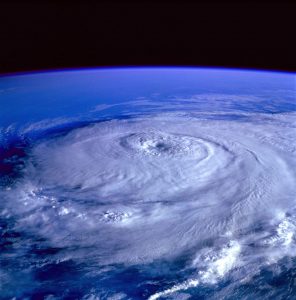 Disaster season has begun with Hurricane Barry hitting Louisiana; a 5.4 earthquake rocking Southern California; and rain and hail making headlines in late June and early July.
Disaster season has begun with Hurricane Barry hitting Louisiana; a 5.4 earthquake rocking Southern California; and rain and hail making headlines in late June and early July.
Disaster season is upon us. Are you ready?
The last thing you want is to be scrambling to respond to a disaster, whether at home or abroad. The key to avoiding disaster (or just chaos) is having a clear policy on which disasters will trigger a response. There are three key parts to any disaster relief policy:
1. Whether to respond
2. When to respond
3. How to respond
Whether to Respond
Since you can’t reasonably respond to every disaster, a scorecard, checklist or decision tree created before a disaster strikes is a good way to make fair decisions that are consistent with your policy. It also makes it easier to explain your response to management, employees and other stakeholders. A scorecard, for example, would allow you to assign weights to different aspects of a disaster situation (higher weight if it is local to a community, lower if not; higher based on the magnitude of the disaster; etc.). The total score would drive the scope of the response—which could be no response.
When to Respond
When to respond refers to the timing of your response and whether you will be proactive (working with nonprofits before disaster strikes) or reactive (responding after the fact). Disaster relief is only one part of the larger giving category of disaster management. Disaster management has four stages:
1. Mitigation (proactive)
2. Preparedness (proactive)
3. Response (reactive)
4. Recovery (reactive)
Which stage or stages you target will depend on your company’s core competencies and resources. A food company may focus on the relief stage, sending foodstuffs to affected areas. A construction company may focus on the recovery stage, sending materials and volunteers to rebuild homes and businesses. Disaster response—sending volunteers and materials to the scene in the wake of the disaster tends to get the most media attention but the other phases are equally important.
How to Respond
The third piece is deciding in advance the nature of your relief support and the nonprofits you will use as conduits to the affected areas. Like any other philanthropic endeavor, your contributions can be cash, volunteers (traditional or pro bono), product and/or service donations, or in-kind donations. Large cash donations make headlines but product and service donations can be just as valuable. Whatever combination of these donation types you choose, establish relationships with reputable charities that can make the most of your philanthropy.
Employee Considerations
Employees are often vocal advocates for those affected by disaster. They can also be great partners in your response. There are programs out there that will train employees to assist in disaster relief, such as the American Red Cross’s Disaster Action Teams, or that deploy human resources to disaster sites, such as Team Rubicon for military veterans. Employees can also get involved if you have an existing Matching Gifts program or are prepared to mobilize one in the wake of a disaster. Employees can contribute to one or two pre-vetted charities through your company, even if you decide not to match their donations.
While we’re on the subject of employees, don’t forget the Employee Relief Fund option for when a disaster hits your staff here and abroad. We’ll talk more about that in an upcoming blog.
To Budget or Not to Budget?
And finally, you have to decide if you will budget for disaster relief each year. If you do decide to include it in your giving budget and no disaster happens (the best scenario, of course), you can either donate that to your chosen partner, return the funds to the company and re-budget, or roll it over into the next year’s budget. The choice is up to you.
Hopefully the coming months will not see a massive, destructive hurricane, tsunami or earthquake. But if you follow the steps outlined above, you’ll be ready if it does. Meanwhile, to learn more about disaster relief, request a copy of our publication Issue Briefing on Disaster Relief.

